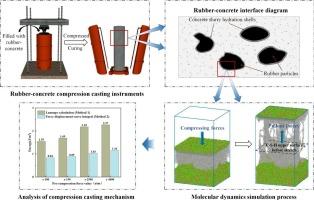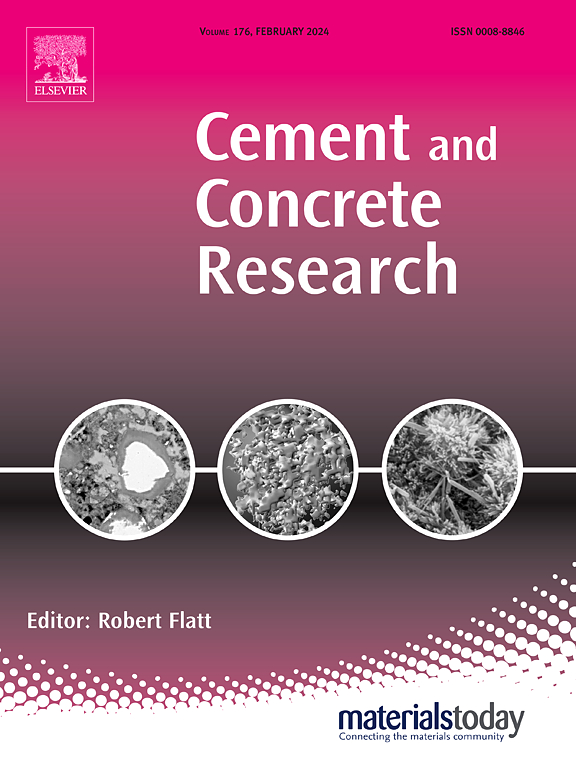Understanding nanoscale mechanism of compression casting on rubber-cement interface: A molecular dynamics study
IF 10.9
1区 工程技术
Q1 CONSTRUCTION & BUILDING TECHNOLOGY
引用次数: 0
Abstract
Using rubber particles as concrete aggregate can effectively address the issue of “black pollution” caused by waste tires. Although the inclusion of rubber particles reduces concrete strength, a compression casting method can enhance its mechanical properties, offering a novel approach to expanding the application range of rubber-concrete. Further development of the compression casting method requires an in-depth understanding of the mechanism behind the novel technique. This study focuses on the nanoscale mechanism of the compression casting, via all-atom molecular dynamics simulations of a C-S-H/rubber interface. Surface roughness is introduced to the employed C-S-H model, providing a more realistic representation of the cement surface compared to existing studies. Models subjected to various levels of compression casting are prepared and tested. Interface integrity is found to be significantly improved with sufficient pre-compression. When the pre-compression force increases from 100 atm to 4000 atm, the peak pullout force of the C-S-H/rubber interface transition zone increases by 90.26%, and the interfacial bond energy increase by 56.65% to 2.27 J/m2. Lastly, a novel pre-compression method for rubber-concrete aggregate is proposed to enhance its economic and engineering applicability. This study reports an in-depth investigation on compression casting mechanisms and contributes to advancement of compression casting methods.


了解橡胶-水泥界面压缩铸造的纳米尺度机理:分子动力学研究
使用橡胶颗粒作为混凝土骨料可有效解决废轮胎造成的 "黑色污染 "问题。虽然橡胶颗粒的加入会降低混凝土强度,但压缩浇注法可以提高其机械性能,为扩大橡胶混凝土的应用范围提供了一种新方法。压缩浇注法的进一步发展需要深入了解这项新技术背后的机理。本研究通过对 C-S-H/橡胶界面的全原子分子动力学模拟,重点研究了压缩浇注的纳米级机理。采用的 C-S-H 模型引入了表面粗糙度,与现有研究相比,更真实地再现了水泥表面。对模型进行了不同程度的压缩浇注和测试。通过充分的预压缩,界面完整性得到明显改善。当预压缩力从 100 atm 增加到 4000 atm 时,C-S-H/橡胶界面过渡区的峰值拉拔力增加了 90.26%,界面结合能增加了 56.65%,达到 2.27 J/m2。最后,提出了一种新型的橡胶混凝土骨料预压缩方法,以提高其经济性和工程适用性。本研究报告深入探讨了压缩浇注机理,有助于推动压缩浇注方法的发展。
本文章由计算机程序翻译,如有差异,请以英文原文为准。
求助全文
约1分钟内获得全文
求助全文
来源期刊

Cement and Concrete Research
工程技术-材料科学:综合
CiteScore
20.90
自引率
12.30%
发文量
318
审稿时长
53 days
期刊介绍:
Cement and Concrete Research is dedicated to publishing top-notch research on the materials science and engineering of cement, cement composites, mortars, concrete, and related materials incorporating cement or other mineral binders. The journal prioritizes reporting significant findings in research on the properties and performance of cementitious materials. It also covers novel experimental techniques, the latest analytical and modeling methods, examination and diagnosis of actual cement and concrete structures, and the exploration of potential improvements in materials.
 求助内容:
求助内容: 应助结果提醒方式:
应助结果提醒方式:


